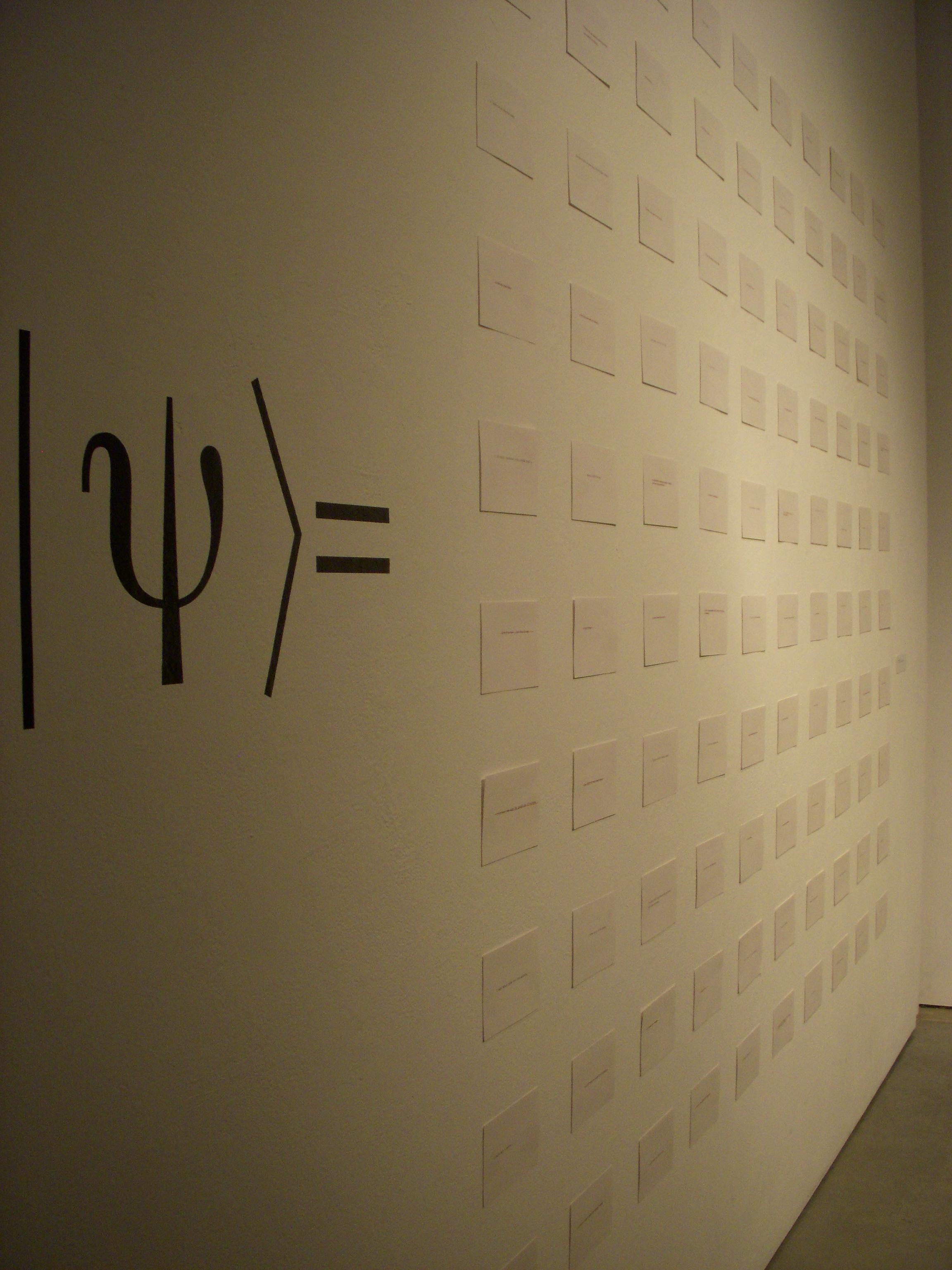Inaugural Exhibition Launches at Science World in the Telus World of Science
News Release | For Immediate Release | April 4, 2012

In 2009, Associate Professor Ingrid Koenig developed a Humanities seminar – Black Holes and Other Transformations of Energy, - based on her own studio practice, which has a focus on theoretical physics within social and political contexts. For the past three years, students in her class have visited TRIUMF to speak with researchers and spend time at the lab gathering inspiration for their work. Through discussion and creative exploration, students have developed a broad spectrum of pieces from playful to provocative based on the discipline of quantum physics, and by examining the construction of science.
For the first time, a collection of these pieces will be displayed at Science World in the Telus World of Science, Thursday, April 5 through Sunday, May 27, 2012. The pieces will be hung around the premises, providing visitors of all ages an opportunity to contemplate science from an artistic perspective.
“Through contemporary art in its many forms, the narrative of science enters the human story and becomes materially transformed,” says Associate Professor Ingrid Koenig, (TRIUMF’s Artist in Residence). “By visiting TRIUMF, students see examples of how the biggest questions about the universe are actually physically examined in a lab. They are surprised by the messiness factor, and puzzled by how the abstractness of physics comes to terms with human experience.”
Liz Toohey-Wiese (’11), one of the artists selected for this year’s exhibit, co-created a piece with Dan Crawford (pictured). They used typed words on recipe cards to visually explain a very strange concept in physics: particle duality in quantum mechanics. In quantum mechanics, a particle can exist in multiple states at once, until one is selected or chosen.
Says Toohey-Wiese, “I realized that quantum mechanics is like a day. Anything is possible in the morning when you wake up, and at the end of the day, you can look back and see what did happen.”
Since her experience working with researchers, Toohey-Wiese now begins her projects with a more scientific process. She undertakes research before creating a piece, and shares the ideas with a variety of different peers to gain insights, which can lead to artistic discoveries.
David Morrissey, a theoretical physicist at TRIUMF,who explores the physics behind dark matter and the yet-to-be-discovered Higgs particle, has discovered the similarities between art and science since he began working with Emily Carr students.
Says David, “It was great to see how art was created. In science, as you go through the process, very often the place where you end up is not necessarily where you had in mind. I see now that the same is true of making art; in both cases, the process steers you.”
Other works in the exhibit include a visual interpretation of a cloud chamber (which is a device that makes cosmic rays coming in from outer space visible to the naked eye), and a humorous attempt to bring physics into the everyday with a series of photographs of flour and sugar solar systems.
- 30 -
About Emily Carr University of Art + Design
Emily Carr University of Art + Design, established in 1925, is a world leader in education and research. Encouraging experimentation at the intersection of art, design, media and technology, our learning community merges research, critical theory and studio practice in an interdisciplinary environment. Alumni and faculty are internationally recognized as award-winning creators and thought leaders who have enormous impact on both the cultural sector and economy. We engage students, industry, and society to continuously explore and think differently about creativity and how it shapes our world. Find out more at ecuad.ca.
About TRIUMF
TRIUMF is Canada's national laboratory for particle and nuclear physics. Located on the south campus of the University of British Columbia, TRIUMF is owned and operated as a joint venture by a consortium of the following Canadian universities, via a contribution through the National Research Council Canada and building capital funds from the Government of British Columbia: University of Alberta, University of British Columbia, University of Calgary, Carleton University, University of Guelph, University of Manitoba, McMaster University, Universite de Montreal, University of Northern British Columbia, Queen's University, University of Regina, Saint Mary's University, Simon Fraser University, University of Toronto, University of Victoria, University of Winnipeg, York University. Visit www.triumf.ca.
About Science World
Science World British Columbia is a charitable non-profit organziation that engages British Columbians in science and inspires future science and technology leadership throughout our province. Visit www.scienceworld.ca .
For more information contact:
TRIUMF
Jennifer Gagné
Artists in Residence & Web Publishing Coordinator
604.222.7692 | jgagne@triumf.ca
Emily Carr University of Art + Design
Roxanne Toronto
Communications Officer
604.844.3075 | roxanne@ecuad.ca
